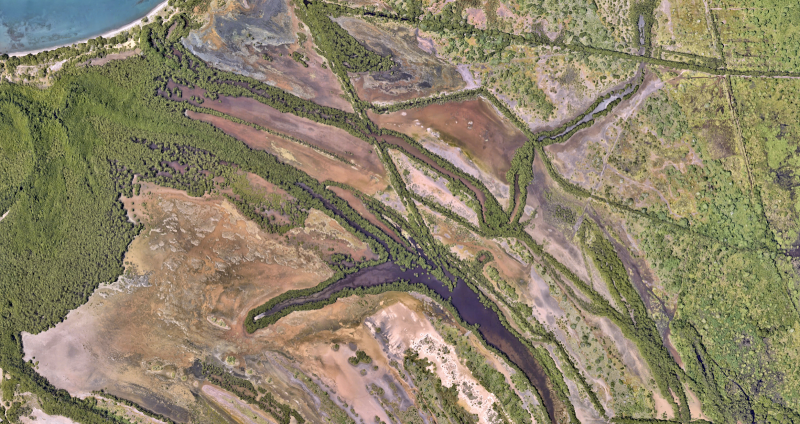Caribbean
Planting mangroves — Puerto Rico
At-A-Glance
Name: Puerto Rico
Region/Country: Caribbean
Active Since: 2020
- Trees planted: 11.028 trees through an experimental design approach
- 2021 planting season: 100.000 trees
- 2022 planting season: 100.00 trees
- Scale up potential 200.000 trees over two years
Impact Highlights
- Repairing degraded and converted land and migration corridors
- Regenerating terrestrial and aquatic ecosystems after hurricanes, floods and earthquakes
- Ensuring public safety, economic development
 Why plant here?
Why plant here?
Like all the Caribbean islands, the landscape in Puerto Rico is characterized by mountains, waterfalls and tropical and dry forests. The island is home to thousands of species of tropical shrubs and trees. In the tidally influenced coastal areas, extensive mangrove forests used to dominate the landscape.
Mangrove trees are known for their ability to survive and thrive in hot, muddy, salty conditions. Mangroves do not only manage to survive in challenging conditions, but their ecosystem also proves to be an extremely important component to the health of the planet. Mangroves provide important habitat for marine life. They provide protection for fish and shellfish as well as birds. Mangroves also serve as an important ecosystem services component in both water and air filtration.
Due to colonialism and the use of land for agricultural products such as sugar cane, the mangrove area in Puerto Rico has successively decreased and increased since the 1800s. Later, industrialization and urban development also dramatically affected mangrove populations. After Hurricane Maria hit the island in 2017, the land has suffered from several earthquakes that have had a devastating effect on the mangrove forests on the Island.
Unfortunately, there have been few resources available from governmental bodies to help reestablish the precious natural resources. Puerto Rico needs private initiatives to help restore its nature.
Experimental plot
As this is our first time planting mangroves and it is our first project in this region, we have started with an experimental plot located in the Northeastern region in Puerto Rico. This site is known as the Loiza Coastal Restoration Project in the Los Frailes Conservation Area.
From an ecological management perspective, one of the biggest challenges is for the trees to outcompete invasive weeds and shrubs while they attempt to reestablish. This requires experimenting with different planting regimes as well as much maintenance in the first few years. Another significant challenge is the lack of nursery and labor force capacity on the island. We are developing strong partnerships and networks to assist us with overcoming this challenge.
We want to help build the capacity of the labor force on the island, and ensure they can build up the nurseries and plant at scale, enriching both the ecosystem and local economy. Together with our local partners from EcoCulture, Northern Arizona University, Reforesta, Para La Naturaleza, the Department of Environmental and Natural Resources among others based in Puerto Rico, we are exploring how these plantings can be scaled up, from experimental design to hundreds of hectares becoming a reality in the coming years.
